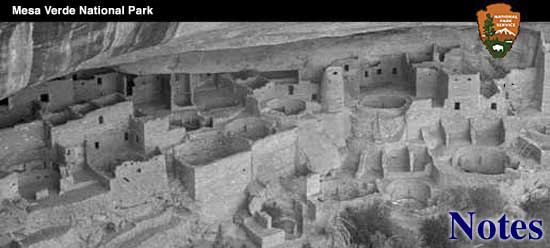

|
One of the birds most often seen by the visitor in the Mesa Verde National Park is the White Throated Swift (Aeronautes saxatales) which is found in all the canyons of the park. Its sharp, vibrant notes soon attract the attention to this handsome white-throated member of the swift family, and its marvelous powers of flight give the spectator many pleasant moments. Making their homes in the cliffs of the various canyons the swifts may be seen at any time, darting about at an incredible speed, catching insects that form their food supply. The swifts feed entirely on the wing, many types of aerial insects forming a portion of their bill of fare. The gape of the swifts bill extends from ear to ear and is surrounded by a fringe of stiff bristles that tend to guide the insects into the swift's mouth. The White Throated Swift is believed to be one of, if not the fastest flying of all birds, and for short distances is thought to be able to attain a speed of three hundred miles an hour. In some of its vertical dives the eye is unable to follow it, so swift is its flight. We find it admirably constructed for this unbelievable speed; the tapering, torpedo-shaped body offering very little air resistance and the long pointed wings giving a maximum of power. The legs of this swift are so small and weak that they will not support the weight of the bird and for this reason it can not alight on the ground or on a branch, but must always seek the face of a cliff where it can grasp the rough surface with its claws and prop. itself up on its tail, the feathers of which are tipped with sharp spines for this purpose. If placed on the ground the White Throated Swift is unable to arise. The legs are so weak the bird can not rise on them so it can only flutter helplessly on the ground, unable to get enough air under the wings to enable it to fly. If released from the hand or tossed into the air the swift will make a low swoop and then shoot aloft with the speed of a rocket. The White Throated Swift makes its home in cracks and crevices near the tops of the most inaccessible cliffs. The nests being made of feathers, instead of twigs. These feathers are glued together and then the whole glued to the rocks. The eggs, pure white, four to six in number, are laid in May or June and the young are ready for their maiden flight a few weeks later. | ||||||
| <<< Previous | > Cover < | Next >>> |
vol2-1d.htm
14-Oct-2011